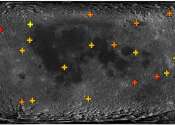NASA's Chandra releases timelapse movies of Crab Nebula and Cassiopeia A
New movies of two of the most famous objects in the sky—the Crab Nebula and Cassiopeia A—are being released from NASA's Chandra X-ray Observatory. Each includes X-ray data collected by Chandra over about two decades. ...









